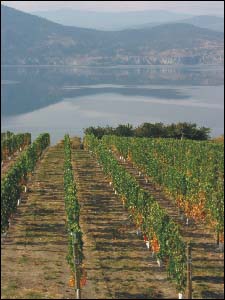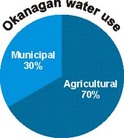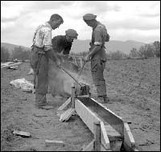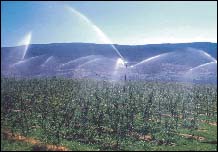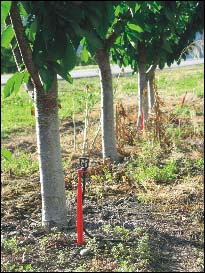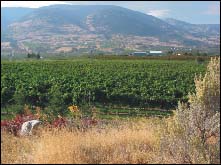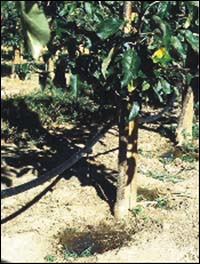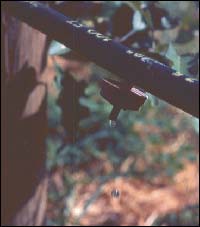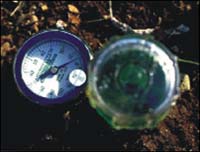Waterscape - Okanagan Basin
|
IrrigationAgriculture is BIG in the valley!
Agriculture creates the rural character of the Okanagan Valley so valued by residents and tourists alike. The valley produces 25% of the total value of British Columbia's agriculture, and is the province's major producer of apples, peaches, pears, and other tree fruits. The valley is also famous for its grapes and many wineries. Vegetables and forage crops that support milk and meat production are also important. Agriculture occupies about 70% of the developed valley lands, and accounts for about the same proportion of water use.
Irrigation - learning to conserve
The first irrigation in the valley involved open flumes to transport water, and the flooding of fields with water. The introduction of pipes reduced leakage and evaporation losses, and allowed more water-efficient overhead spray irrigation. Irrigation practices continue to improve. Today, drip irrigation and microsprinklers are replacing less efficient irrigation techniques and have greatly reduced the water required to grow crops. This allows more crop production while using the same water. Gains from conservation can also be used to protect ecosystems such as streams.
Dry grasslands to irrigated orchards - agriculture transformed the valley
When European settlers first came to the Okanagan Valley, they farmed the wet lowlands. Early last century, irrigation districts were established to store and divert stream water, allowing dry grasslands to be converted to agriculture. A system of highland storage reservoirs, canals, and pipelines supplied water to farmers. Over time, irrigation districts also supplied water to growing communities. |
Waterscapes:
|
